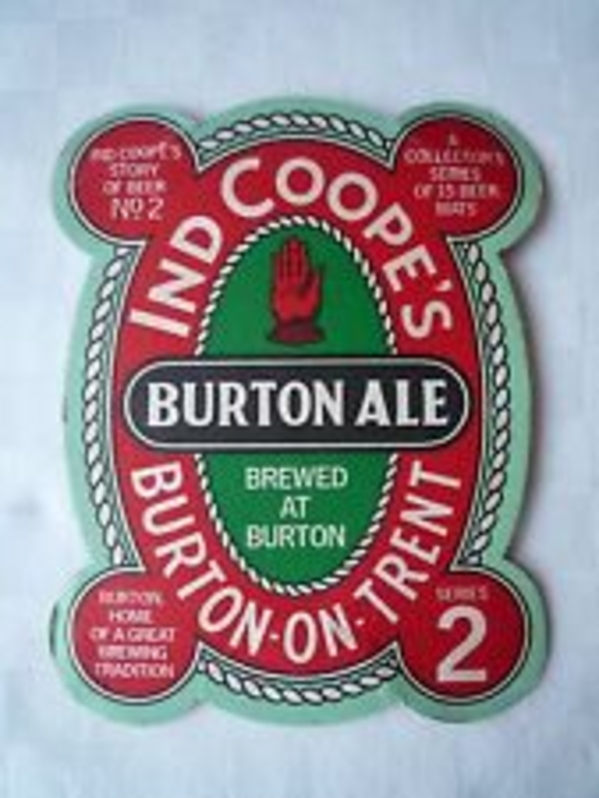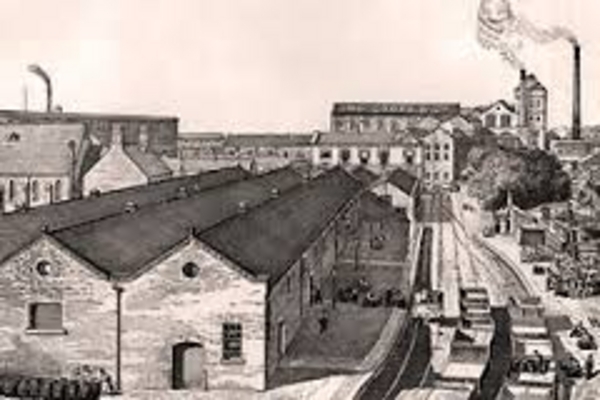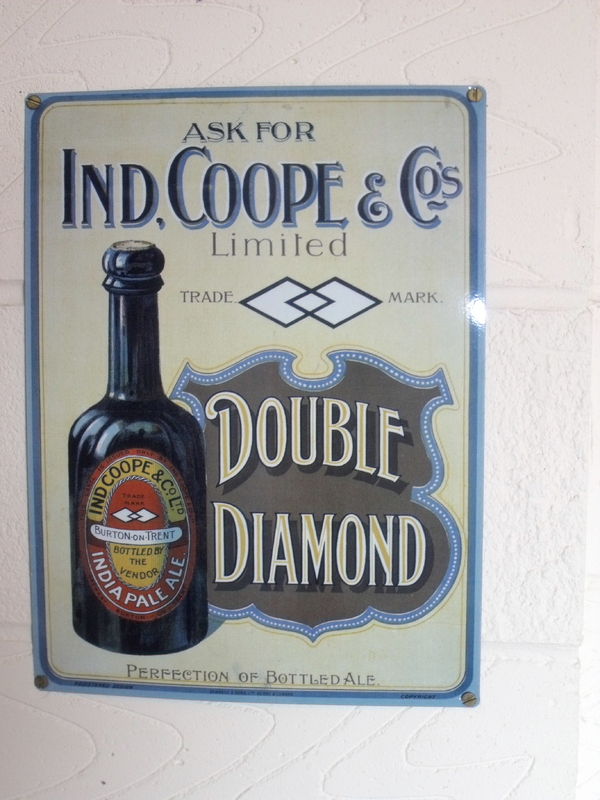DBA: gone for a Burton
Added: Tuesday, January 6th 2015

Carlsberg UK says it has stopped production of the legendary Draught Burton Ale because “demand has fallen to an unsustainable level” – a statement that says more about the priorities of global brewers than it does for beer drinkers’ preferences.
At a time when cask ales are out-performing the rest of the British beer market, a brewery with more than two brain cells to rub together might think it had a winner with DBA. But the Danish brewer’s lack of interest in the sector is underscored by its closure of the historic Tetley brewery in Leeds while DBA – brewed under licence by J W Lees in Manchester – has not a penny spent on advertising or promotion.
All Carlsberg’s efforts go into driving sales of the lager churned out from its vast fizz factory in Northampton. Executives in Copenhagen will shed no tears over the death of DBA because they have never heard of the brand – even though it played a pivotal role in the “real ale revolution” of the 1970s and 80s.
The beer was called Ind Coope Draught Burton Ale, brewed as the name implies in Burton-on-Trent. It was launched in 1976 and it was a landmark in the conversion of the “Big Six” national brewers to cask ale. They had been caught off-guard by the success of the Campaign for Real Ale founded in 1971. Independent brewers – regional and family-owned – were basking in the sunshine as drinkers rushed to sample their wares.
But the national brewers had put all their kegs in one basket. Some, such as Watneys, had no real ales at all. Ind Coope was part of Allied Breweries, which included Ansells in Birmingham and Tetley in Leeds but their cask beers were strictly regional. Allied’s main effort went into promoting Double Diamond keg ale and Skol lager.
But, ahead of its rivals, it sniffed the wind and decided to tip-toe back into the cask sector. I had joined CAMRA’s head office in February 1976, working alongside Michael Hardman, one of the campaign’s founder members, on What’s Brewing and the Good Beer Guide. In the summer of that year, we joined up with another CAMRA founder and fellow journalist Graham Lees to join a group of writers invited to Burton for the launch of a new cask ale.
We were sceptical. Could the brewer of DD and Skol be able to make a decent cask ale? But we were bowled over in every way when we sampled the beer following a tour of the historic Ind Coope Brewery built in 1856 (below) at the height of the IPA craze: the company had a second brewery in Romford, Essex. At 4.8%, it was full flavoured and full bodied. I was to describe it later in the Real Ale Almanac as follows:
“Original gravity 1,047 degrees. Alcohol by volume, 4.8 per cent.
Ingredients: pale malt, chocolate malt, liquid sugar. UK bittering hops with Styrian Goldings for aroma and dry hopping [adding additional hops to each cask of finished beer].
Nose: stunning aromas of malt, rich hops and marmalade fruit.
Palate: massive, mouth-filling balance of malt and hops with a finish full of hops and fruit notes.
Comments: magnificent powerful ale; casks are heavily primed with sugar for secondary fermentation and the ABV can reach 5.1 or 5.2 per cent.”
The ingredients information was supplied by Allied, which never revealed the “UK hops” it used. I learned later from Geoff Mumford and Bruce Wilkinson, who run the Burton Bridge Brewery and had previously worked for Ind Coope, that DBA was a cask version of a strong version of DD known as Double Diamond Export.

In 1976, Allied planned to put DBA into a few hundred of its pubs. But once the news was out, the clamour from both drinkers and publicans forced Allied to make the beer more widely available. Many of the group’s 6,600 pubs no longer had hand pumps and beer engines, just taps for keg and lager. As a result, the major manufacturer of beer engines, Gaskell & Chambers in Birmingham, had to put its workforce on permanent overtime to keep pace with the demand for its equipment. Allied despatched head office staff to train publicans in the lost skills of tapping and venting casks of beer that enjoyed a second fermentation in pub cellars.
The group, to its astonishment, found it had a success on its hands. It responded by busily promoting DBA and flooding its pubs with a series of much sough-after large beer mats (see top), with distinctive Mickey Mouse ears. The mats gave details about the beer and the history of brewing in Burton-on-Trent.
The quality of DBA can be measured by the fact that it's the only beer brewed by a national brewer to have won CAMRA's Champion Beer of Britain award in 1990.
But you can always rely on big business to rain on a parade. Just two years after the launch of DBA, Allied merged with the J Lyons coffee and confectionary group to form the unlikely alliance of Allied Lyons. Lyons had little interest in its brewing division and this was cemented in 1991 when it announced it would run the breweries as a joint venture with Carlsberg to be known as Carlsberg-Tetley. The arrangement was short-lived. In 1994, Allied Lyons merged with the wine group Pedro Domecq to become Allied Domecq. As a result, Ind Coope Romford closed in 1997 – Ansells had closed long before in 1981. In 1996 Allied Domecq sold its share in Carlsberg-Tetley to its Burton neighbour, Bass. The merger was blocked by the competition authorities and Carlsberg became the sole owner of the breweries. Bass was allowed to take over the Ind Coope plant but the production of DBA was switched to Tetley in Leeds.
At a stroke, DBA had lost its credibility as a Burton ale once it was brewed in Yorkshire. Carlsberg was busily turning the keg version of Tetley Bitter into a giant national brand and eventually DBA was moved yet again, brewed for Carlsberg by J W Lees.
Only a handful of pubs sold the beer. Unloved and unwanted by Carlsberg, it has now been sent to the graveyard of great beers that have been killed by giant corporations.
When I visit Burton I always stop for a glass of DBA in the Roebuck, the nearest pub to the train station. But no more. When I next drop in to the pub, I will raise a glass of another brewer’s beer to the memory of the great Draught Burton Ale.
*As brewing historian Martyn Cornell has pointed out, DBA was a Burton Pale Ale, not a Burton Ale. When Double Diamond was a cask and bottled beer prior to the keg version, it was labelled “India Pale Ale”. Burton Ale, historically, predated IPA and was a strong amber/brown beer.
Could the name be revived? It could be argued that Burton Ale is a generic term but companies such as Carlsberg hang on to brand names like grim death. Bass and its successors own a raft of old beer names but are reluctant to allow other brewers to revive the beers.
When Steve Wellington ran the White Shield Brewery as part of the Bass Museum and then moved to the new William Worthington Brewery in the National Brewery Centre, I asked him if he could bring back Charrington IPA. It was the first beer I ever drank as a teenager in London’s East End. But neither Bass nor the Charrington family were willing to release the name and trademark.
Two Burton brewers, Burton Old Cottage and Burton Bridge, produce beers broadly in the Burton Ale style but it would be good if permission were granted by Carlsberg to restore DBA to its rightful home.








